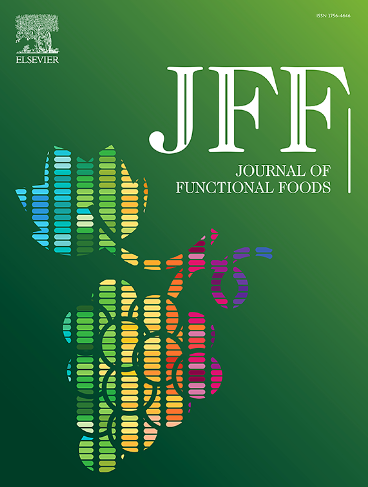利用植物化学物质对抗糖尿病:对分子途径和治疗进展的洞察
IF 4
2区 农林科学
Q2 FOOD SCIENCE & TECHNOLOGY
引用次数: 0
摘要
糖尿病(DM)是一种以胰岛素抵抗、胰腺β细胞功能障碍、氧化应激和慢性炎症为特征的多因素代谢紊乱。它受多种分子途径的影响,包括磷脂酰肌醇3-激酶/蛋白激酶B (PI3K/Akt)、糖酵解、己糖胺、二酰基甘油/蛋白激酶C (DAG/PKC)、多元醇和晚期糖基化终产物(AGEs)。这些途径调节葡萄糖代谢、胰岛素信号、脂质稳态和炎症反应。单靶点治疗往往不能提供全面的治疗,使得多途径的方法更有效。一些天然化合物表现出多靶点效应,如槲皮素和花青素,它们增强PI3K/Akt通路并抑制AGEs的形成。表没食子儿茶素-3-没食子酸酯(EGCG)抑制己糖胺和多元醇途径,减少胰岛素抵抗和血管并发症。木犀草素和杨梅苷调节DAG/PKC信号,减少炎症和内皮功能障碍。使用天然化合物的多途径策略为有效和可持续的糖尿病管理提供了有希望的治疗潜力。本文章由计算机程序翻译,如有差异,请以英文原文为准。

Harnessing phytochemicals to combat diabetes: Insights into molecular pathways and therapeutic advances
Diabetes mellitus (DM) is a multifactorial metabolic disorder characterized by insulin resistance, pancreatic beta-cell dysfunction, oxidative stress, and chronic inflammation. It is influenced by various molecular pathways, including phosphatidylinositol 3-kinase/protein kinase B (PI3K/Akt), glycolysis, hexosamine, diacylglycerol/protein kinase C (DAG/PKC), polyol, and advanced glycation end-products (AGEs). These pathways regulate glucose metabolism, insulin signaling, lipid homeostasis, and inflammatory responses. Single-target therapies often fail to provide comprehensive treatment, making a multi-pathway approach more effective. Several natural compounds exhibit multi-target effects, such as quercetin and anthocyanin, which enhance the PI3K/Akt pathway and inhibit AGEs formation. Epigallocatechin-3-gallate (EGCG) suppresses the hexosamine and polyol pathways, reducing insulin resistance and vascular complications. Luteolin and myricitrin regulate DAG/PKC signaling, minimizing inflammation and endothelial dysfunction. A multi-pathway strategy using natural compounds offers promising therapeutic potential for effective and sustainable DM management.
求助全文
通过发布文献求助,成功后即可免费获取论文全文。
去求助
来源期刊

Journal of Functional Foods
FOOD SCIENCE & TECHNOLOGY-
CiteScore
9.60
自引率
1.80%
发文量
428
审稿时长
76 days
期刊介绍:
Journal of Functional Foods continues with the same aims and scope, editorial team, submission system and rigorous peer review. We give authors the possibility to publish their top-quality papers in a well-established leading journal in the food and nutrition fields. The Journal will keep its rigorous criteria to screen high impact research addressing relevant scientific topics and performed by sound methodologies.
The Journal of Functional Foods aims to bring together the results of fundamental and applied research into healthy foods and biologically active food ingredients.
The Journal is centered in the specific area at the boundaries among food technology, nutrition and health welcoming papers having a good interdisciplinary approach. The Journal will cover the fields of plant bioactives; dietary fibre, probiotics; functional lipids; bioactive peptides; vitamins, minerals and botanicals and other dietary supplements. Nutritional and technological aspects related to the development of functional foods and beverages are of core interest to the journal. Experimental works dealing with food digestion, bioavailability of food bioactives and on the mechanisms by which foods and their components are able to modulate physiological parameters connected with disease prevention are of particular interest as well as those dealing with personalized nutrition and nutritional needs in pathological subjects.
 求助内容:
求助内容: 应助结果提醒方式:
应助结果提醒方式:


